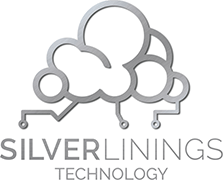
We’ve all been through it; the meeting that goes on and on. Instead of listening, you resort to playing with your phone or daydreaming the time away, all the while wondering why you are even in attendance.
According to Salary.com, meetings are ranked as the number one office productivity killer, and they are increasingly filling up a good portion of our days. While the need for running a meeting will never go away, the art of running an effective meeting is a skill we can all learn more about. There are effective ways to run a meeting that will leave employees feeling energized and excited about work, instead of yearning for a break instead. Here are a few tips:
What is your purpose?
Before you ever calendar a meeting and send out the invites, ask yourself one question: what do I hope to accomplish? What are my ultimate objectives? If you can’t clearly define the purpose for the meeting, the results you hope to achieve, and the process you’ll take to get there, spend some time refining each of these items before you hit enter. A purpose provides direction, and helps keep things on track.
Carefully weigh who is invited
It’s easy to call a meeting and invite everyone on the team. But does everyone truly need to be there? Take the time to think about who truly needs to be there, and who will be impacted most by what the meeting is about. If the subject isn’t relevant to a team member, or they will have little impact that will carry weight in the final decision, they will view their attendance as a waste of time. It’s better to allow these team members to do other, more productive tasks.
Set a specific schedule
Open ended meetings tend to drone on and on, with no end in sight. Create an agenda that outlines the specific topics of the meeting, and how much time will be dedicated to each topic. Use that timeline as you make your way through the meeting. You can even use this to be specific in scheduling your meeting, telling attendees how long it will be, and providing them with outlined topics so they can be more prepared for the discussion.
Create an equal playing field
If you’ve carefully constructed the people in attendance, it’s important to hear what each one has to say. Never allow one person to monopolize the time, providing all the thoughts or answers. Instead, call out each person and hear what they have to say. If you take this approach in all your meetings, the expectations will be there at the start of each one, giving you more brainstorming potential and greater interaction between the team members.
Ban technology
The new reality is everyone carries their smartphones and iPads with them everywhere. While it allows people to get more done, it’s also the easiest way to get sidetracked. Instead of focusing on the topic at hand, a person can easily be consumed by an email or a text message. If you keep meetings short and direct, keep technology out of the conference room, and keep all eyes and thoughts front and center.
Take action
It’s common for people to walk away from a meeting with very different interpretations of the final outcome. As a part of the process, clearly outline the final outcomes and strategies, and make assignments as necessary. A simple followup email can keep everyone on track, knowing exactly the work that needs to be completed.
Meetings can be a valuable and productive part of doing business, if you take the time to make them that way.


